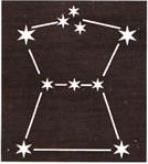Class 3 Exam > Class 3 Tests > Science for Class 3 > Test: The Earth- 1 - Class 3 MCQ
Test: The Earth- 1 - Class 3 MCQ
Test Description
10 Questions MCQ Test Science for Class 3 - Test: The Earth- 1
Test: The Earth- 1 for Class 3 2025 is part of Science for Class 3 preparation. The Test: The Earth- 1 questions and answers have been
prepared according to the Class 3 exam syllabus.The Test: The Earth- 1 MCQs are made for Class 3 2025 Exam. Find important
definitions, questions, notes, meanings, examples, exercises, MCQs and online tests for Test: The Earth- 1 below.
Solutions of Test: The Earth- 1 questions in English are available as part of our Science for Class 3 for Class 3 & Test: The Earth- 1 solutions in
Hindi for Science for Class 3 course. Download more important topics, notes, lectures and mock
test series for Class 3 Exam by signing up for free. Attempt Test: The Earth- 1 | 10 questions in 15 minutes | Mock test for Class 3 preparation | Free important questions MCQ to study Science for Class 3 for Class 3 Exam | Download free PDF with solutions
Test: The Earth- 1 - Question 1
A group of stars forming a pattern is shown below. Such hind of groups are called:


Detailed Solution for Test: The Earth- 1 - Question 1
Detailed Solution for Test: The Earth- 1 - Question 2
| 1 Crore+ students have signed up on EduRev. Have you? Download the App |
Detailed Solution for Test: The Earth- 1 - Question 3
Test: The Earth- 1 - Question 4
The imaginary line dividing the Earth into two halves is tailed:
Detailed Solution for Test: The Earth- 1 - Question 4
Detailed Solution for Test: The Earth- 1 - Question 5
Detailed Solution for Test: The Earth- 1 - Question 6
Detailed Solution for Test: The Earth- 1 - Question 7
Detailed Solution for Test: The Earth- 1 - Question 8
Detailed Solution for Test: The Earth- 1 - Question 9
Test: The Earth- 1 - Question 10
The Sun rises in the east and sets in the west. In what direction is the Earth rotating?
Detailed Solution for Test: The Earth- 1 - Question 10
|
19 videos|48 docs|30 tests
|
Information about Test: The Earth- 1 Page
In this test you can find the Exam questions for Test: The Earth- 1 solved & explained in the simplest way possible.
Besides giving Questions and answers for Test: The Earth- 1, EduRev gives you an ample number of Online tests for practice


















